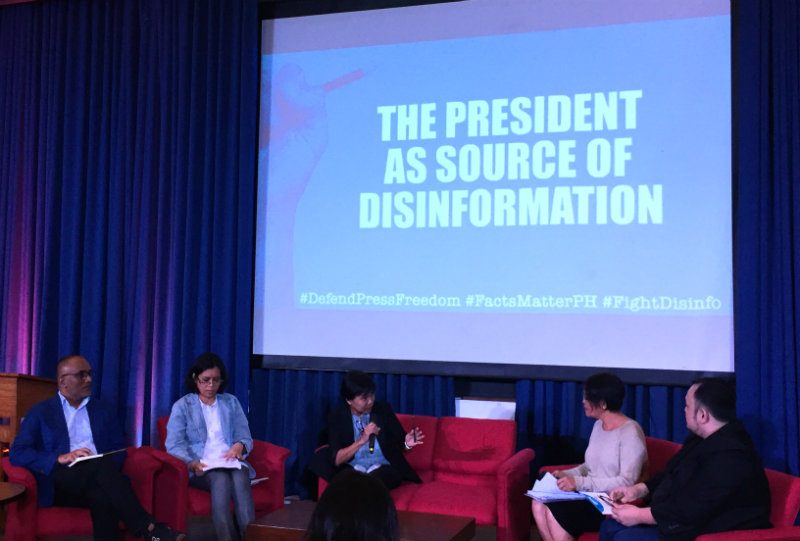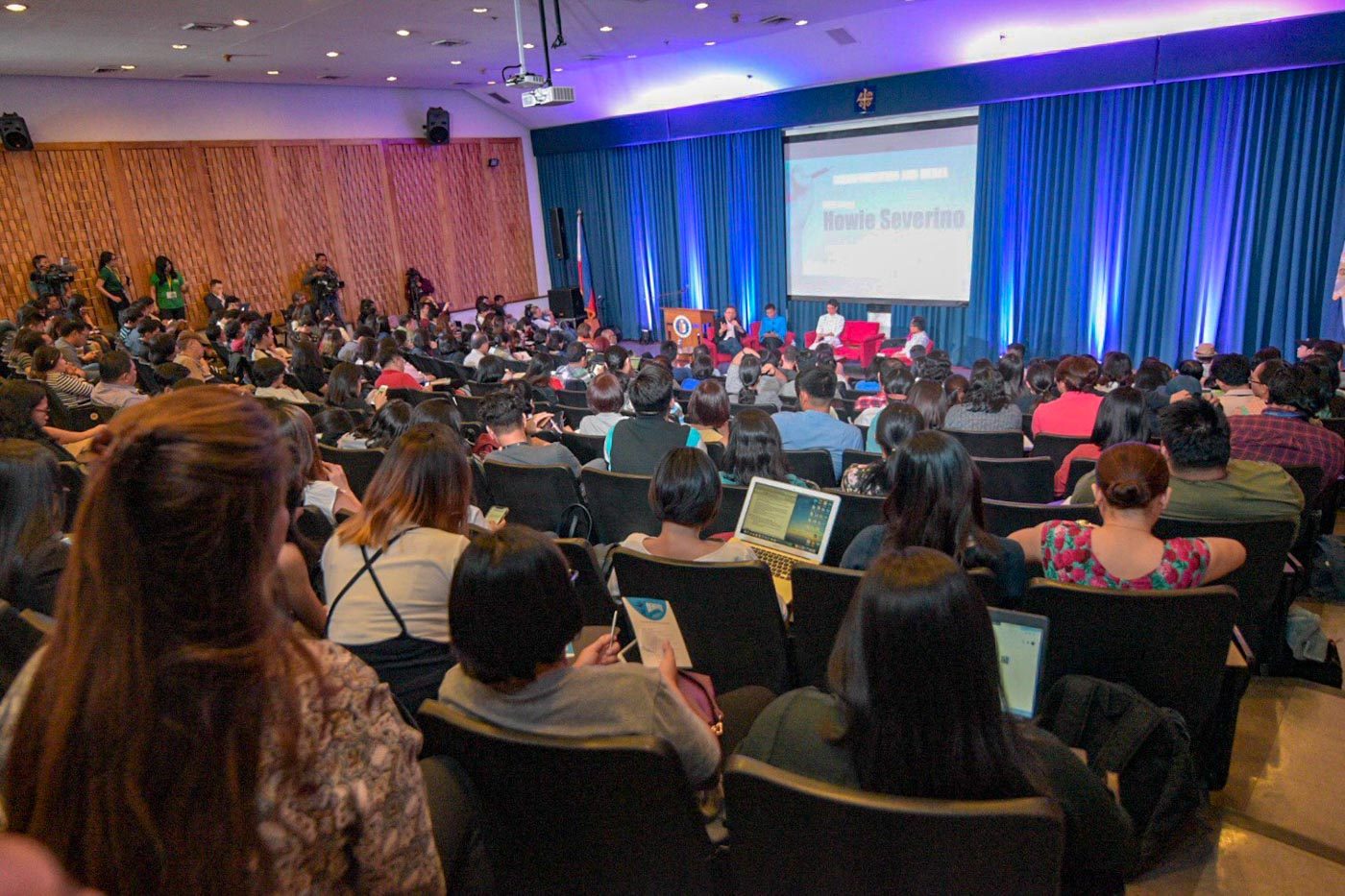SUMMARY
This is AI generated summarization, which may have errors. For context, always refer to the full article.

MANILA, Philippine – In a country where the topmost leader is known to routinely peddle disinformation, how should reporters and the media do their job?
This is one of the questions posed to panelists of the Democracy and Disinformation forum organized by a group of media organizations at the Ateneo Rockwell on Monday, February 2.
Managed by veteran journalist Malou Manghas, the panel tackled the options available for the media in an environment where the malady of fake news is as prevalent as the common cold. A video launched by Vera Files on Monday set the tone of the discussion.
The video illustrated the several times the president has flip-flopped on his claims and deliberately peddled disinformation in his public speeches. Disinformation is defined as false information that are spread to deliberately mislead the public. (READ: Duterte is No. 1 source of fake news – veteran journalist)
In the past, Duterte has claimed that there were 4 million drug addicts in the country. The Dangerous Drugs Board, however, pegged the number at only 1.8 million. The board did not classify them as addicts, but only drug users in general. Duterte also announced in different speeches that up to 6 to 8 policemen and soldiers die each day in the administration’s war on drugs. Vera Files, however, countered this and pegged the number at only 3 in 20 days. (WATCH: What is fake news?)
Disinformation as a PR strategy
While the term “fake news” is already more than a century old, it has seen an exponential rise in recent years because of social media. This worldwide trend has posed a threat to the state of democracy in different countries, including the Philippines.
“Unfortunately, too many journalists perceive their roles to be a little more than a stenographer – tracking and reporting what newsmakers do. This results to a media that amplifies newsmakers’ disinformation campaign,” Cherian George, a professor in the Department of Journalism at Hong Kong Baptist University, said. (WATCH: ‘Fake news’ and the dilemma it has created)
This is the reason why, according to senior communications director and public relations specialist Ron Jabal, reporters should treat purveyors of fake news more than just a typical source for reports.

Journalists need to be more critical, he added. Citing the structure that Duterte and his followers are pursuing, Jabal explained that the disinformation campaign could actually be perceived as a public relations strategy of the current administration.
“We need to be able to look at this from the perspective of the campaign: Who are speaking? How is the messaging being crafted? Who are interpreting message from the source? This strategy is winning because they are packaging, repackaging to appeal to the base,” Jabal said.
Learning from the disinformation army
Veteran journalist Ellen Tordesillas pointed out one of the challenges for the media today: To ensure that they do not allow themselves to be used to peddle fake information.
“If we are going by the Goebbels theory that a lie becomes truth when repeated often enough, a journalist by repeatedly reporting and accurately quoting Duterte’s false claims, inadvertently becomes a peddler fake news,” Tordesillas said.
With the fast-paced nature of the job, Tordesillas emphasized the importance of special verification reports from every media organization’s desk members to complement the news pieces from their beat reporters.
Instead of only focusing on debunking fake news, Jabal said that media organizations can also look into how the disinformation army has been effectively packaging and amplifying their messages to the wider public and learn from them.
Here are some ways media organizations can “sexify” reports and improve their campaign on truth-telling, according to Jabal:
-
It should elicit an emotional response
-
It should have a powerful visual component
-
It should have a strong narrative
- It has to be repeated
Continuing the vigilance
The panelists agreed that truth is a harder sell.
“The truth is, when you are looking into the economic problems of the world, there are simply no easy answers. It is much easier sell to just make fake promises – which every politician does. How can you compete with that?” George asked.
But despite this, they encouraged reporters and the media to continue the vigilance in the face of the threat posed by disinformation to the country’s democracy.
“If the media won’t, who will? Always do a Pia Ranada – stand up. That’s how it should be done,” Jabal concluded. – Rappler.com
Add a comment
How does this make you feel?
There are no comments yet. Add your comment to start the conversation.